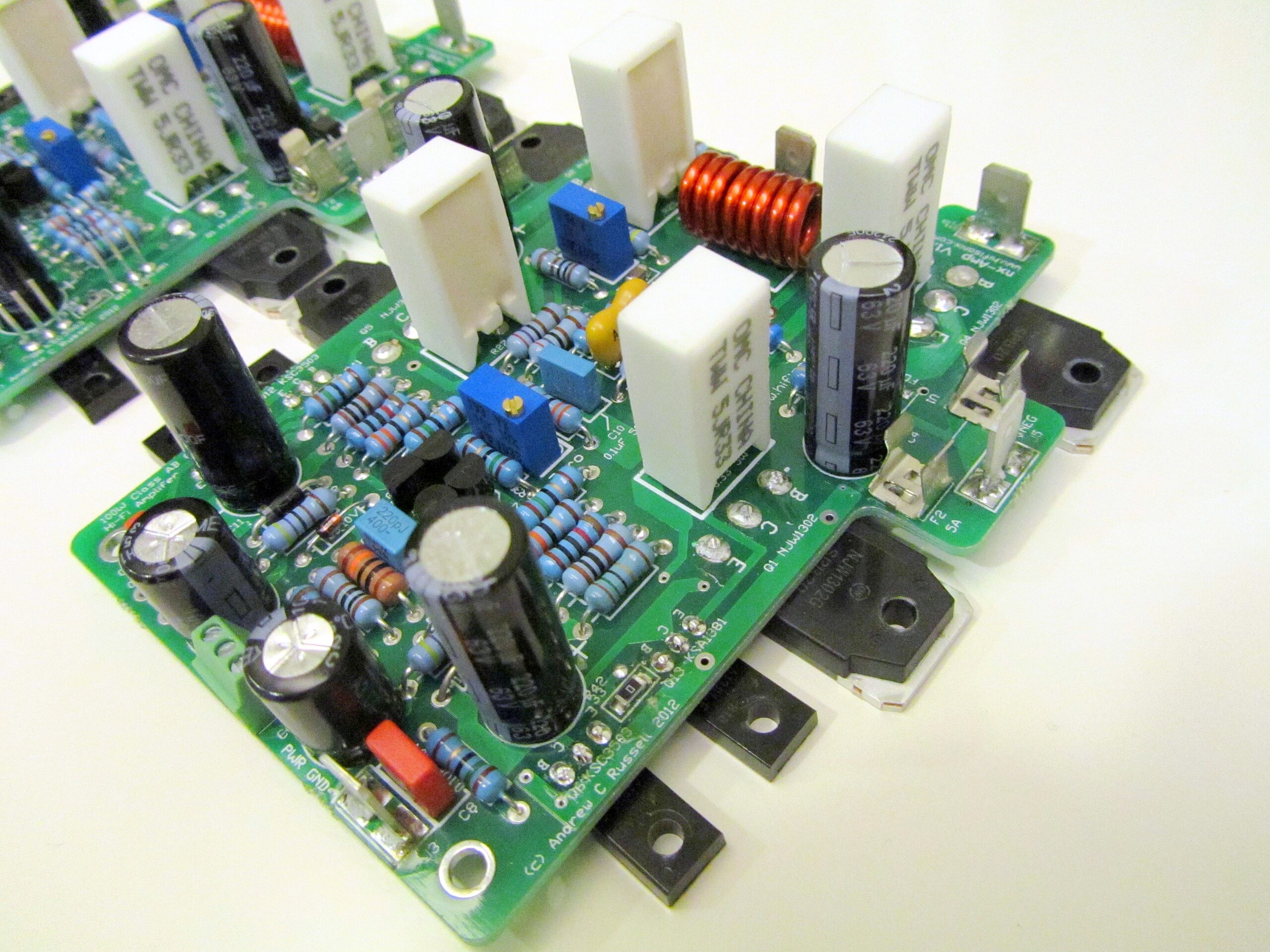Originally published in December 2012.
This power amp design is based on the sx-Amplifier topology, but with the TIS and output stage re-configured for class AB operation, enabling it to deliver 100 W into 8 Ohms. I have kept the design very simple, retaining the CFA topology, providing a very wide -3 dB bandwidth of 570 kHz, high slew rates (140 V/us) and low distortion. Since it was first published in 2012, about 400 board sets have been sold world-wide (the sister sx and kx2 class A current feedback amplifiers have had combined sales of around 450 board sets). The nx-Amplifier is a perfect introduction to current feedback amplifiers, showcasing the topologies legendary open midrange, fantastic bass performance and delicate, silky top end.
Amplifier write up with circuit description, wiring diagram and construction details:- The-Ovation-nx-Amplifier-V2.10 (updated November 2014 to V2.0 PCB’s incorporating all feedback and updates). Please IGNORE the BOM in the build document and instead use this latest BOM, released in December 2021 that uses currently available semiconductors nx-Amp BOM December 2021
You can get a complete set of double sided THP Gold Plated V2.0 PCB’s for the above from Jim’s Audio on ebay here:
Hifisonix nx-Amplifier PCB Set
(2 off nx-Amplifier boards + 1 off PSU +Protect excl. shipping).
Here is a link to the diyAudio forum discussing this amplifier and the sx-Amplifier. If you have any questions, you can post them up here or on the diyAudio forum.
1. The nx&sx-Amp PSU board is a simple unregulated PSU board with no muting, output short circuit or DC offset protection. The only protection is the amplifier module fuses
2. . The nx-Amp_PSU+Protection board option couples an unregulated PSU with speaker muting, output short circuit protection and DC offset detection protection.
See the nx-Amplifier article above for details. If you have any questions, feel free to post your questions up here.
If you are a manufacturer, kit supplier or DIY shop, and you want to use the designs (circuit or PCBs) you need to contact me.
I’d be happy to hear your comments/feedback.
Notes and Addendums
1. Please note, there in no R2 on the PSU +Protect PCB or on the schematic although the BOM calls for it.


Leave a Reply